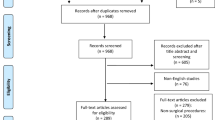Abstract
Tetralogy of Fallot (ToF) is the most common cyanotic congenital heart disease, making up 10% of all congenital heart defects. Annual follow-up echocardiograms are recommended in patients with repaired ToF, but evidence-based guidelines do not exist. We hypothesized that most echocardiograms performed in asymptomatic patients with repaired ToF and no physical exam change do not result in an actionable change (AC) in management. We retrospectively reviewed records of all patients with ToF and prior complete repair at our institution between January 2000 and September 2015. Changes in echocardiograms resulting in hospital admission, medication addition/change, cardiac catheterization, or surgical procedure were identified via chart review. These changes were referred to as an AC. A total of 1135 echocardiograms were reviewed from 233 patients (160 with initial complete repair, 70 with prior shunt, and 3 with other initial surgery). The median number of echocardiograms per patient was 5. Of the 1135 echocardiograms, 15 (1.3%) were associated with AC. Of the 15 patients with AC echocardiograms, 9 underwent a shunt prior to complete repair (9/70, 12.9%) and 6 had undergone an initial complete repair (6/160, 3.8%). The median age at AC was 6.3 years (IQR 4.4, 6.8) in the shunt group and 0.90 years (IQR 0.87, 1.1) in the initial complete repair group. In asymptomatic patients with repaired ToF and no physical exam change, echocardiograms rarely lead to a change in clinical management. In conclusion, the likelihood and timing of AC echocardiograms and reinterventions vary based on the type of initial surgery.


Similar content being viewed by others
References
Canfield MA, Honein MA, Yuskiv N et al (2006) National estimates and race/ethnic-specific variation of selected birth defects in the United States, 1999–2001. Birth Defect Res A 76(11):747–756
Reller MD, Strickland MJ, Riehle-Colarusso T, Mahle WT, Correa A (2008) Prevalence of congenital heart defects in metropolitan Atlanta, 1998–2005. J Pediatr 153(6):807–813
Smith CA, McCracken C, Thomas AS et al (2019) Long-term outcomes of tetralogy of Fallot. JAMA Cardiol 4(1):34–38
Marelli AJ, Ionescu-Ittu R, Mackie AS, Guo L, Dendukuri N, Kaouache M (2014) Lifetime prevalence of congenital heart disease in the general population from 2000 to 2010. Circulation 130(9):749–756
Prakash A, Powell AJ, Geva T (2010) Multimodality noninvasive imaging for assessment of congenital heart disease. Circ Cardiovasc Imaging 3(1):112–125
Lang SM, Bolin E, Hardy S, Tang X, Collins RT (2017) Diagnostic yield of outpatient pediatric echocardiograms: impact of indications and specialty. Pediatr Cardiol 38(1):162–169
Warnes CA, Williams RG, Bashore TM et al (2008) ACC/AHA 2008 guidelines for the management of adults with congenital heart disease. J Am Coll Cardiol 52(23):e143–e263
Redington AN (2006) Determinants and assessment of pulmonary regurgitation in tetralogy of Fallot: practice and ptifalls. Cardiol Clin 24(4):631–639
Dragulescu A, Grosse-Wortmann L, Fackoury C et al (2011) Echocardiographic assessment of right ventricular volumes after surgical repair of tetralogy of Fallot: clinical validation of a new echocardiographic method. J Am Soc Echocardiogr 24(11):1191–1198
Valente AM, Cook S, Festa P et al (2014) Multimodality imaging guidelines for patients with repaired tetralogy of Fallot: a report from the American Society of Echocardiography. J Am Soc Echocardiogr 27(2):111–141
Baumgartner H, Bonhoeffer P, De Groot NMS et al (2010) ESC Guidelines for the management of grown-up congenital heart disease (new version 2010). Eur Heart J 31(23):2915–2957
Silversides CK, Kiess M, Beauchesne L et al (2010) Canadian Cardiovascular Society 2009 Consensus Conference on the management of adults with congenital heart disease: outflow tract obstruction, coarctation of the aorta, tetralogy of Fallot, Ebstein anomaly and Marfan's syndrome. Can J Cardiol 26(3):e80–e97.
Villafane J, Edwards TC, Diab KA et al (2017) Development of quality metrics for ambulatory care in pediatric patients with tetralogy of Fallot. Congenit Heart Dis 12(6):762–767
House AV, Danford DA, Spicer RL, Kutty S (2015) Impact of clinical follow-up and diagnostic testing on intervention for tetralogy of Fallot. Open Heart 2(1):e000185
Rathod RH, Jurgen B, Hamershock RA et al (2017) Impact of standardized clinical assessment and management plans on resource utilization and costs in children after the arterial switch operation. Congenit Heart Dis 12(6):768–776
Martins IF, Doles IC, Bravo-Valenzuela NJM, Santos AORD, Varella MSP (2018) When is the best time for corrective surgery in patients with tetralogy of Fallot between 0 and 12 months of age? Braz J Cardiovasc Surg 33(5):505–510
Dorobantu DM, Mahani AS, Sharabiani MTA et al (2018) Primary repair versus surgical and transcatheter palliation in infants with tetralogy of Fallot. Heart 104(22):1864–1870
Kanter KR, Kogon BE, Kirshbom PM, Carlock PR (2010) Symptomatic neonatal tetralogy of Fallot: repair or shunt? Ann Thorac Surg 89(3):858–863
Ho AB, Bharucha T, Jones E, Thuraisingham J, Kaarne M, Viola N (2018) Primary surgical repair of tetralogy of Fallot at under three months of age. Asian Cardiovasc Thorac Ann 26(7):529–534
Ungerleider RM, Kanter RJ, OLaughlin M et al (1997) Effect of repair strategy on hospital cost for infants with tetralogy of Fallot. Ann Surg 225(6):779–784
Author information
Authors and Affiliations
Corresponding author
Ethics declarations
Conflict of interest
None of the authors has any relation with industry that could influence the impartiality of this study.
Additional information
Publisher's Note
Springer Nature remains neutral with regard to jurisdictional claims in published maps and institutional affiliations.
Rights and permissions
About this article
Cite this article
Xu, J., Guthrey, C., Dalby, S. et al. The Limited Benefit of Follow-Up Echocardiograms After Repair of Tetralogy of Fallot. Pediatr Cardiol 40, 1722–1727 (2019). https://doi.org/10.1007/s00246-019-02210-3
Received:
Accepted:
Published:
Issue Date:
DOI: https://doi.org/10.1007/s00246-019-02210-3




